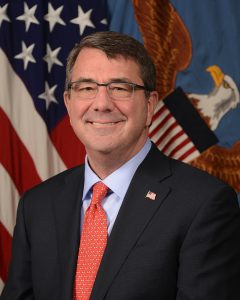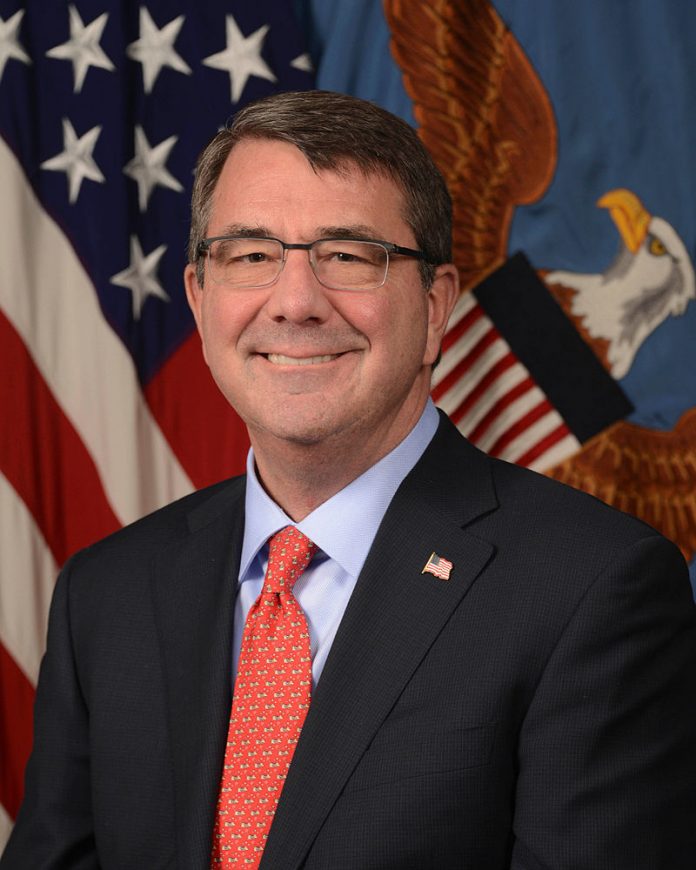To most Americans, the inner workings of the Defense Department/Pentagon is a conundrum, or at the very least a mystery. Its complexity and massive scope with far-reaching tentacles is truly a labyrinth to both those in other government departments as well as to the general public.
Ash Carter spent the greater part of his career in the service of the Department of Defense (DOD). In 1993 he served as Assistant Secretary of Defense for Global Strategic Affairs under Pres. Clinton. In 1994, he directed the nuclear planning during the Korea crisis. Starting in 2009 he served as Under-secretary for acquisitions, technology and logistics, and from 2011-2013 he was Deputy Secretary of Defense, overseeing the annual budget. He finally got the top job, Secretary of Defense, in 2015 in the Obama Administration.
With his extensive knowledge of the DOD, Carter provides in this book a blueprint with which to maneuver through the inner workings of the department with tidbits and insights not widely known. His overview is direct, unvarnished with all its blemishes and warts exposed. It is refreshing to the reader to be presented with this insight with blunt clarity, without minutia, and a straight-forward no-nonsense approach. It is a look into the inner workings of the DOD, without the presentation being dumbed-down.
In the chapter on combat readiness, Carter discusses the cost and the constant retraining of the troops so they will be ready at a moment’s notice. He contends that even the most skilled in combat must continually refresh their skills and not become complacent. He highlights an interesting law that as head of DOD his signature is needed on each and every individual slated for deployment overseas. Without that signature, not a single soldier can be in combat.
During his term, Carter had to juggle five balls in the air at once: China, Russia, Iran, North Korea, and Terrorism. That has not changed since he left office in 2017, at the end of the Obama years. Fortunately, he had an able President to work with. “He invariably knew more about a topic than one might expect a president to know,” writes Carter. “He is a quick learner, and during his time in office he made no disastrous miscalculations like those experienced by most of his predecessors.” On the flip side, Carter tells us Obama was sometimes overconfident, “even arrogant.”
The key mis-step in Obama’s foreign policy was in Syria, when he drew a red line against the use of chemical weapons by the Assad regime, and then backed down in deciding not to launch a military strike. Unfortunately, Carter dismisses this in just a few lines, merely hinting at the furor and lasting damage it caused. Not to mention the fact it essentially gave Russia the green light to take over the situation. Merely stating the lack of action left “the impression that red lines in general were meaningless,” and then opining that Obama went too far in ditching “conventional wisdom” is a major dodge. However, it does him the opportunity to say Trump “has tilted so far” in the trashing of norms “that the country’s protective warning lights should be flashing.”
Overall his criticism of Obama is muted: His worst offense in Carter’s eyes being that the President could have done a better job in “communication with the public.” As for Clinton, Carter is effusive. “I found him a wonderful person to work for – smart verging on brilliant, deeply knowledgeable, and highly energetic.”
Carter made a particular point of not leaking his advice to the press, instead speaking in private with Obama. “I knew this professional approach would increase the chances that my advice would be accepted by a thoughtful leader like Obama.” He felt this was especially necessary as press leaks for the first six years of the Administration had “left wounds that still smarted.” While Carter does go on to give examples of how his approach worked (for example, in Afghanistan policy), we are left wondering what leaks in the previous years were so damaging. Throughout, Carter treads nimbly, avoiding more than measured remonstrances towards anyone except Trump.
He also takes a swipe at the press, stating that “some reporters file stories without adequately checking on their accuracy or fairness.” He does not name names, nor does he name those who give the public “responsible reporting.” Without any references, or meat to hang on the bones, these platitudes are worthless.
Much of the book reads like a civics lesson, as Carter tells us the DOD “is very different from managing a business. It is unlike virtually any business in that it has little or no choice about the tasks it undertakes.” And this is followed by a description of Congress (“a collection of 535 individuals who each have their own agenda”); its Constitutional powers, structure and function; an outline of how to prepare for testimony before Congress; and an outline of the chain of command in DOD. Pretty dry stuff, although no doubt a useful exposition.
In the absence of sparkling prose, the diligent reader is treated to the occasional gripping narrative. He describes the experience, just days after becoming deputy secretary of defense, in which he had to choose whether or not to shoot down an airplane heading directly for the U.S. Capitol building. Fighter jets were sent to intercept the plane which was “foreign-flagged and foreign-crewed.” Neither radio communication nor flares fired in front of the plane elicited any response. One of the F-16 pilots resorted at last to blasting the plane with its jet engine, a “dangerous maneuver” to put it mildly. The plane finally changed course. It turned out the pilot had fallen asleep! Carter admits that in times of crisis, the level of false information he received was as high at 90%, showing how important it is to have an experienced hand at DOD.
In conclusion, in these days of appointment of political hacks, and cronies being given positions of authority in the high government offices (to foster the current President’s narrow agenda and financial rewards), Carter was a refreshing reassurance of bygone days when competency, integrity, dignity, class, and stability was the hallmark of government. Under the new Administration this era will again be the norm, with former General Lloyd Austin at the helm of DOD.
The text concludes with 11 pages of helpful notes, with key aspects of the text highlighted in bold, with accompanying page numbers. Scanning these notes allows the reader to refresh the ideas presented throughout.
As the subtitle of the book suggests, this is not a salty tell-all book, but rather a sober essay on leadership. As such it should be required reading for anyone who aspires to work in the federal government, especially now that so much work is required to repair the damage caused by a deranged Commander-in-Chief.
Inside the Five-Sided Box: Lessons from a lifetime of leadership in the Pentagon is by Dutton Press.
Review written by Dr. M. Emanuele














